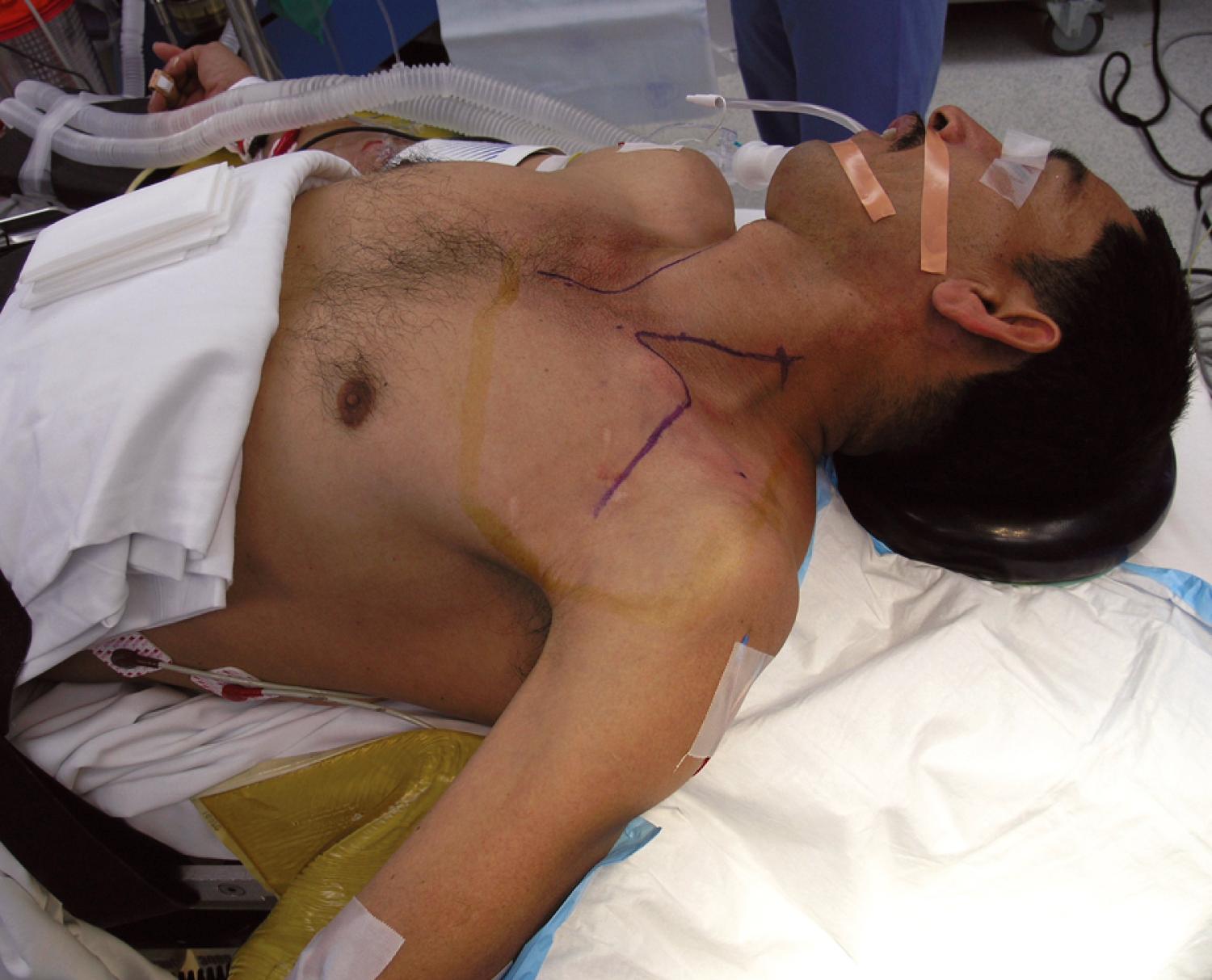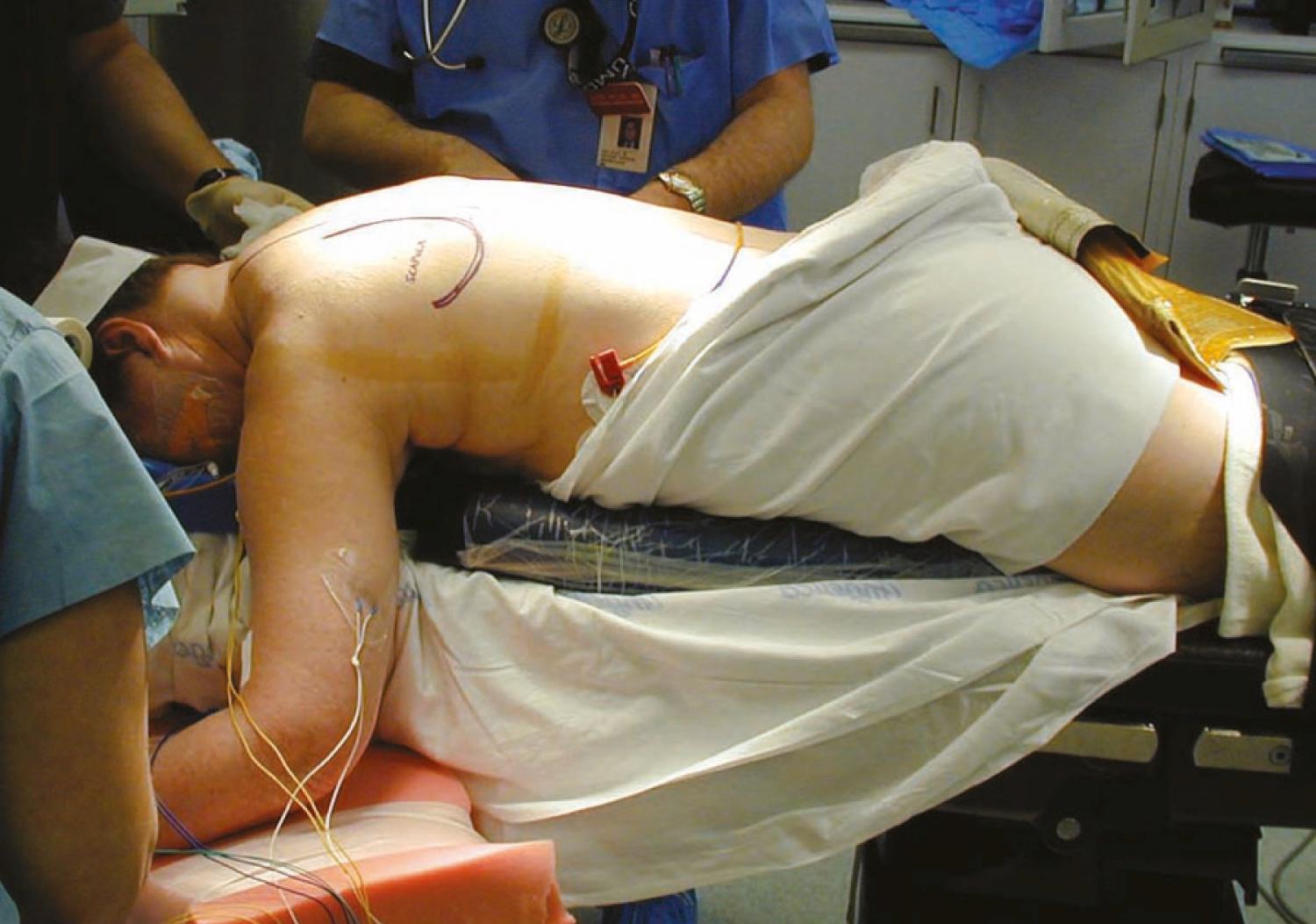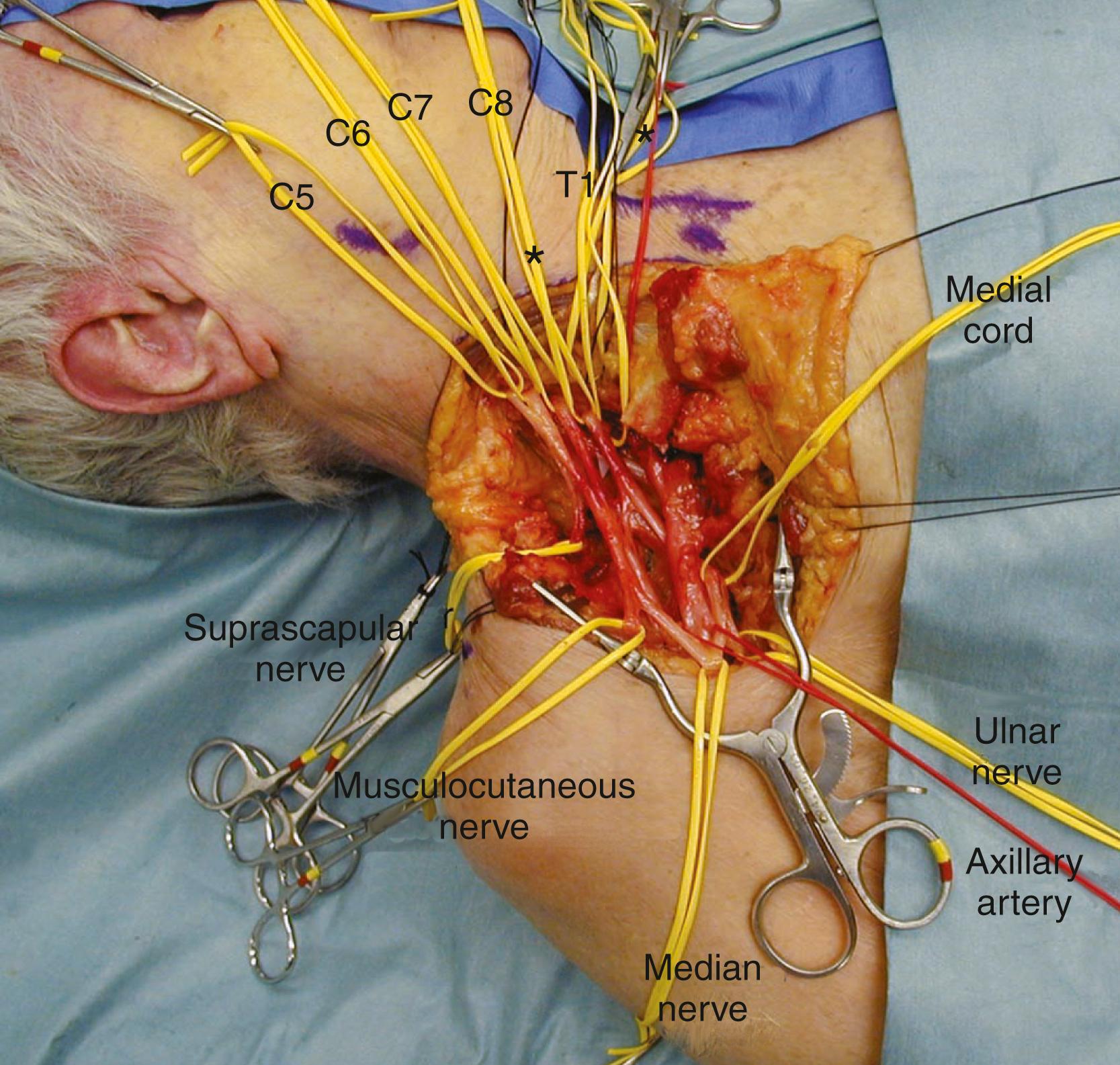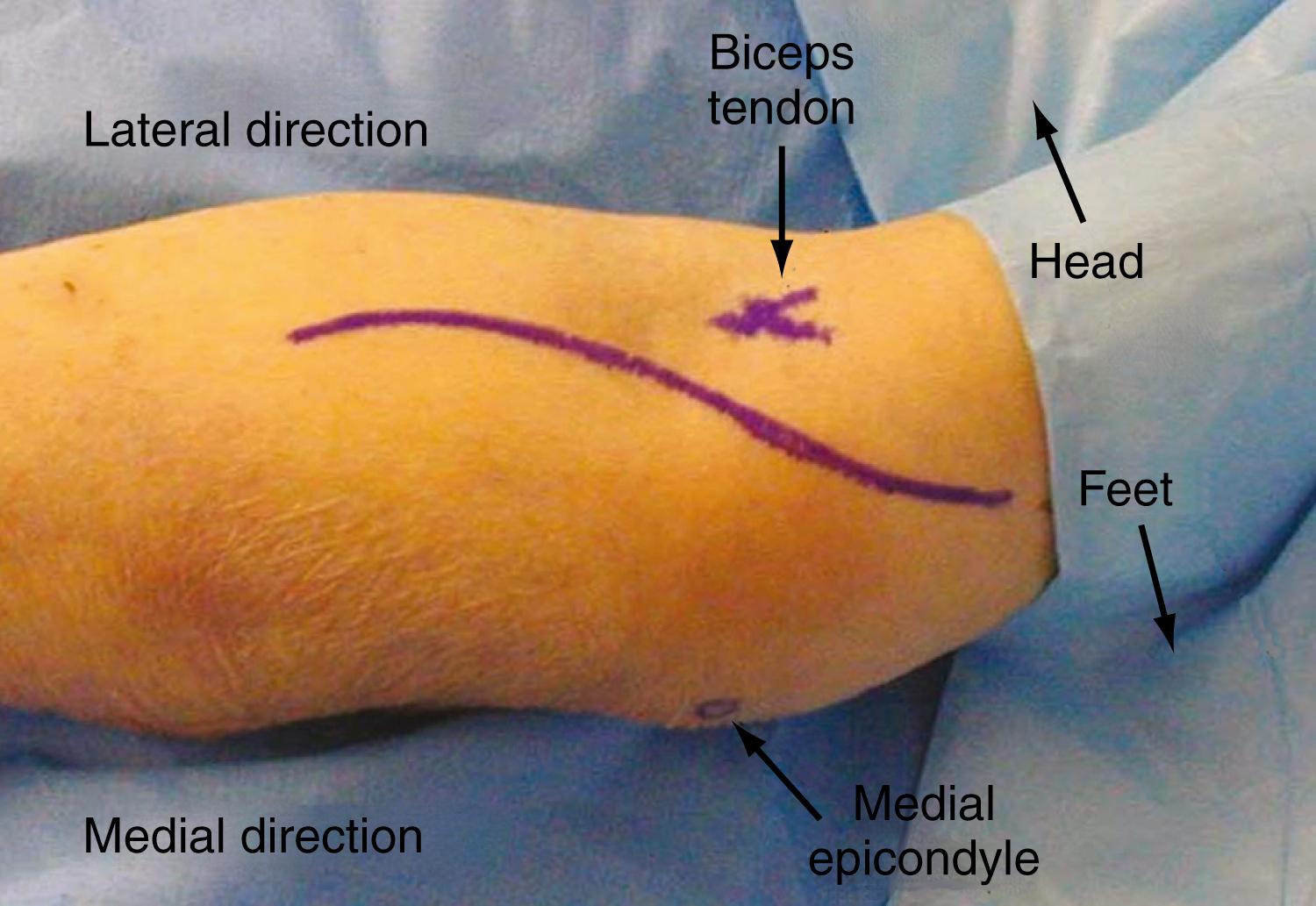Physical Address
304 North Cardinal St.
Dorchester Center, MA 02124
This chapter includes an accompanying lecture presentation ( ![]() ) that has been prepared by the author. As noted in the text, the author has also prepared 18 s ( , , , , , , , , , , , , , , , , , ) demonstrating positioning for peripheral nerve procedures discussed in this chapter.
) that has been prepared by the author. As noted in the text, the author has also prepared 18 s ( , , , , , , , , , , , , , , , , , ) demonstrating positioning for peripheral nerve procedures discussed in this chapter.
Proper positioning and knowledge of anatomy in peripheral nerve surgery is key to a successful operative outcome.
Proper positioning allows for ease of exposure of the desired nerve(s).
Proper positioning allows for ease of harvesting nerve grafts when required.
In performing peripheral nerve surgery, as with any area of surgery, knowledge of the anatomy is of the utmost importance. The surgeon not only must understand the nerve anatomy but also must be able to correlate neural structures with their target muscles and sensory distribution. Knowledge of the vascular and skeletal anatomy is also essential for planning the surgery. In much of nerve surgery, the normal anatomy is distorted—from trauma, tumor, or other disease—and the surgeon must understand the normal anatomy before proceeding. A properly planned incision and exposure allow the correct identification of the vital structures, as well as room in which to perform the needed tasks. Neurosurgery of the brain and spine entails working in small, confined spaces, whereas peripheral nerve surgery often allows the luxury of working in a more open, more exposed area. The surgeon should take advantage of this situation and make the exposure generous. Whenever possible, exposure of a nerve should include normal proximal and distal areas of the nerve to allow the surgeon to work from the normal to the abnormal areas and back to the normal area.
The specific nerve or nerves to be operated on and the necessity of harvesting grafts will dictate much of the positioning for an operation. If intraoperative electromyographic monitoring of muscles is used, the limb may be draped out of the field. If, however, muscle contraction must be observed and no monitoring is used, the entire limb must be either exposed or covered with clear plastic drapes. In each case, the positioning and exposure must be arranged to suit the individual needs of the particular operation.
Upper and lower extremity nerves are considered in turn, with a brief review of anatomy, optimal positioning, and a stepwise operative exposure. More in-depth viewing of positioning for peripheral nerve surgery is available in and in individual video clips that focus on each anatomic region.
See also the following video clips demonstrating proper positioning for the exposure of various nerves in the upper extremities:
. Suprascapular Nerve
. Spinal Accessory Nerve
. Brachial Plexus (Supraclavicular and Infraclavicular Exposures)
. Exposure of the Ulnar, Median, and Musculocutaneous Nerves in the Arm
. Ulnar Nerve at the Cubital Tunnel
. Anterior Interosseous Nerve
. Posterior Interosseous Nerve
. Carpal Tunnel
. Ulnar Nerve at Guyon Canal
. Superficial Radial Nerve
. Radial Nerve
The brachial plexus is formed by the ventral primary rami of spinal nerves C5 to T1. It provides innervation to the muscles and skin of the upper extremity. Less often, C4 contributes a branch to C5 (prefixed brachial plexus) and T2 contributes a branch to T1 (postfixed brachial plexus). The roots of the brachial plexus emerge between the anterior and middle scalene muscles and descend over the first rib, posterior to the clavicle. In the lower part of the posterior cervical triangle, after traversing between the anterior and middle scalene muscles, the C5 and C6 roots unite to form the upper trunk of the brachial plexus. Before this union, C5 gives off the dorsal scapular nerve to the rhomboid nerves and a branch to the phrenic nerve. The C5 root, along with the C6 and C7 roots, gives off contributions to the long thoracic nerve to the serratus anterior muscle. The C7 root continues as the middle trunk, and the C8 and T1 roots unite to form the lower trunk of the brachial plexus. The upper trunk gives off the suprascapular nerve to the supraspinatus and infraspinatus muscles, as well as the nerve to the subclavius muscle.
The trunks separate into anterior and posterior divisions. The anterior divisions of the upper and middle trunks form the lateral cord of the brachial plexus. The anterior division of the lower trunk continues as the medial cord. The posterior divisions of all three trunks unite as the posterior cord. The divisions form at the level of the clavicle, and the cords continue into the infraclavicular space.
The cords form just distal to the clavicle, below the tendinous insertion of the pectoralis minor muscle. They are named according to their spatial relationship to the axillary artery. Each cord ends in two terminal branches. The lateral cord gives off the lateral pectoral nerve and then terminates as the musculocutaneous nerve and the lateral contribution to the median nerve. The medial cord gives off the medial pectoral, medial brachial cutaneous, and medial antebrachial cutaneous nerves and then terminates as the ulnar nerve and the medial contribution to the median nerve. The posterior cord gives off the thoracodorsal and subscapular nerves and then terminates as the axillary and radial nerves.
Although many variations have been reported, true anomalies of this basic anatomy are rare.
For an anterior approach to the brachial plexus, the patient is placed in the supine position with a bolster under the ipsilateral shoulder ( Fig. 26.1 ). The neck is placed in a slight amount of extension, and the head is turned 45 degrees to the contralateral side. The arm is abducted on an arm board. Both lower extremities below the knee are prepared in a sterile manner and draped to allow harvesting of the sural nerve for grafts. If other sources in the upper extremity, such as medial brachial and antebrachial cutaneous nerves, are to be used for grafting, the entire arm should be prepared. The surgeon should have the ability to work from above and below the patient’s clavicle. The arm board should be mobile enough to allow the surgeon to abduct or adduct the patient’s arm at the shoulder as necessary.

In selected cases, a posterior approach to the plexus is needed. Indications for this approach include a need for very proximal exposure to the neural foramina and the exiting nerve roots. It is also indicated in patients in whom the anterior aspects of the neck and chest wall have extensive scarring either from radiation therapy, as in breast cancer treatment, or from a previous plexus operation. This approach clearly exposes the roots, trunks, and divisions, but exposure of the cords and nerves is inadequate. Because of the greater potential for damage to the cupula pleurae of the lungs and a subsequent pneumothorax, the surgeon should have equipment for a chest tube on standby.
For the posterior approach, the patient is placed in the prone position ( Fig. 26.2 ). Abdominal bolsters are placed to allow the abdomen to hang freely. An additional bolster should be placed under the patient at the level of the clavicle and upper sternum so that the anterior chest wall is lifted slightly off the operating table. The head is turned to the contralateral side. The contralateral arm is protected and tucked next to the patient’s body. The ipsilateral arm is abducted approximately 30 degrees and bent at the elbow. The elbow is then placed on a padded Mayo stand to the patient’s side. The operating table is slightly tilted in a reverse Trendelenburg position. The surgeon works from above the patient’s head, as well as from below the patient’s shoulders and side.

Kline and associates, Maniker, and Simone and associates provided further details regarding positioning and approach in this area.
Exposure of the brachial plexus anteriorly may be divided into the supraclavicular and infraclavicular approaches ( Fig. 26.3 ). These approaches can be combined for the full exposure of the plexus or tailored to expose the desired area of the plexus. The supraclavicular portion of the approach exposes the roots, trunks, and proximal portion of the divisions. The infraclavicular portion of the approach exposes the distal portion of the divisions, the cords, and the branches of the brachial plexus.

The patient is placed in the supine position with the arm abducted on an arm board. The shoulder is abducted and externally rotated. The forearm is placed slightly flexed and in supination. The surgeon works from between the patient’s abducted arm and the patient’s body.
The sulcus between the biceps brachii and the triceps muscles is located, palpated, and traced proximally to the anterior axillary fold. The skin is then incised along the tracing, the interval between the biceps brachii and triceps is developed, and the brachial fascia incised. The median nerve lies lateral to the brachial artery. Because there are no branches of the nerve in the arm, the nerve is easily mobilized and traced both proximally and distally.
The incision begins 2 to 3 cm above the medial epicondyle over the medial intermuscular septum. Moving inferiorly, it crosses the elbow flexion crease obliquely and just medial to the biceps brachii tendon ( Fig. 26.4 ). The incision continues distally over the bicipital aponeurosis (lacertus fibrosus) in a gentle curve toward the midline of the forearm. The incision then moves distally down the forearm, following the interval between the flexor digitorum superficialis and the brachioradialis muscles. The incision is opened proximally, and the median nerve is located in the interval between the biceps brachii muscle and the medial intermuscular septum. The nerve is traced into the forearm, and the lacertus fibrosus (bicipital aponeurosis) crosses its path obliquely. The nerve next passes deep to the pronator teres muscle. As the nerve is traced, it dives between the two heads of this muscle. The nerve then moves deep to the arch of the flexor digitorum superficialis muscle, and this arch is surgically divided. The median nerve may then be traced to the wrist, where it lies between the flexor carpi radialis and the flexor digitorum superficialis muscles.

The anatomy and surgical exposure of the median nerve in the wrist are covered in other chapters.
Become a Clinical Tree membership for Full access and enjoy Unlimited articles
If you are a member. Log in here